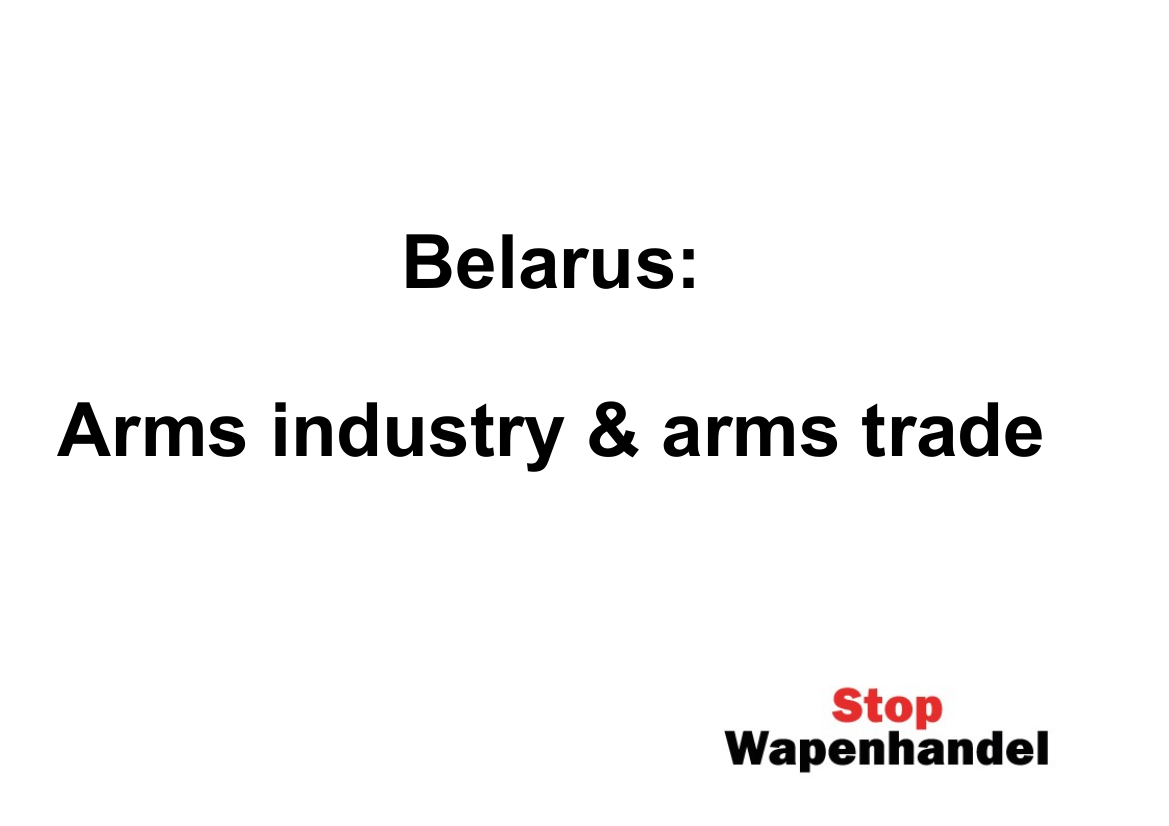
[Presentation at webinar ‘The Situation in Belarus: Arms Trade and Nuclear Weapons‘ (18 April 2023) in the series ‘Stoppt das Töten! – Friedenspolitische Webinarreihe rund um den Krieg in der Ukraine’ – with Olga Karach (Nash Dom)]
Thank you. I want to start with a short disclaimer: There is not much information available on Belarus and its arms industry and arms trade, at least not from English/German/French sources. For this presentation I gathered what I could get from these sources, but I will certainly not call myself an expert on the issue. So, if you know more about Belarus and its arms industry, or know people who know more, as organisers of this webinar we’d be very happy if you’d contact us.
Now, in this short presentation I will try to give a basic overview of the Belarusian arms industry, its ties to and importance for Russia and its role as arms exporter in a broader sense.
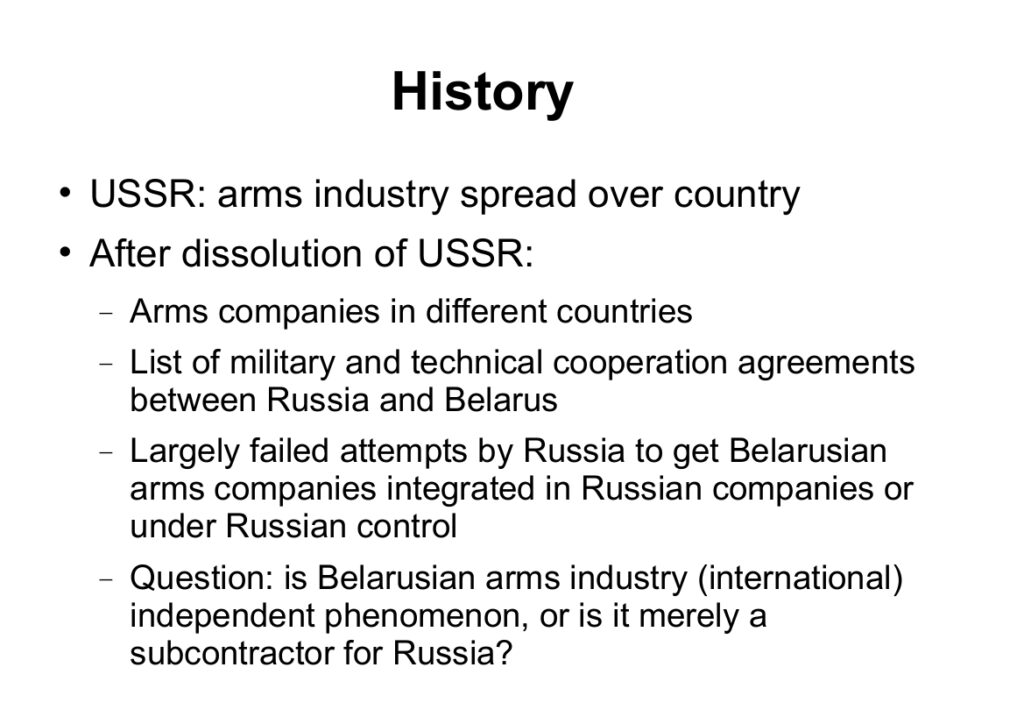
A short look at the history to start with. In the Soviet Union arms companies were spread out over the country, so over different republics, and together they formed an infrastructure, which was highly dependent on each other in terms of assembling complete arms and weapon systems with components from several supplying companies. This infrastructure was, at least for its production side, quite isolated from the rest of the world. During the Cold War years the Soviet Union and the United States were by far the largest arms exporters in the world though.
After the collapse of the Soviet Union the set up of its arms industry led to arms companies now being in different countries. According to some experts, Russia tried to counter this development by trying to maintain, or later regain, control of arms companies producing essential components for its own arms industry. While there have been several agreements between Russia and Belarus on military production cooperation and old and new ties between arms companies have been continued or established, the Belarusian regime has kept much of its arms industry somewhat independent. On paper at least, the big question on which experts give differing answers, is whether the Belarusian arms industry can be seen as an independent actor or as merely a subcontractor for and part of the Russian military-industrial complex.
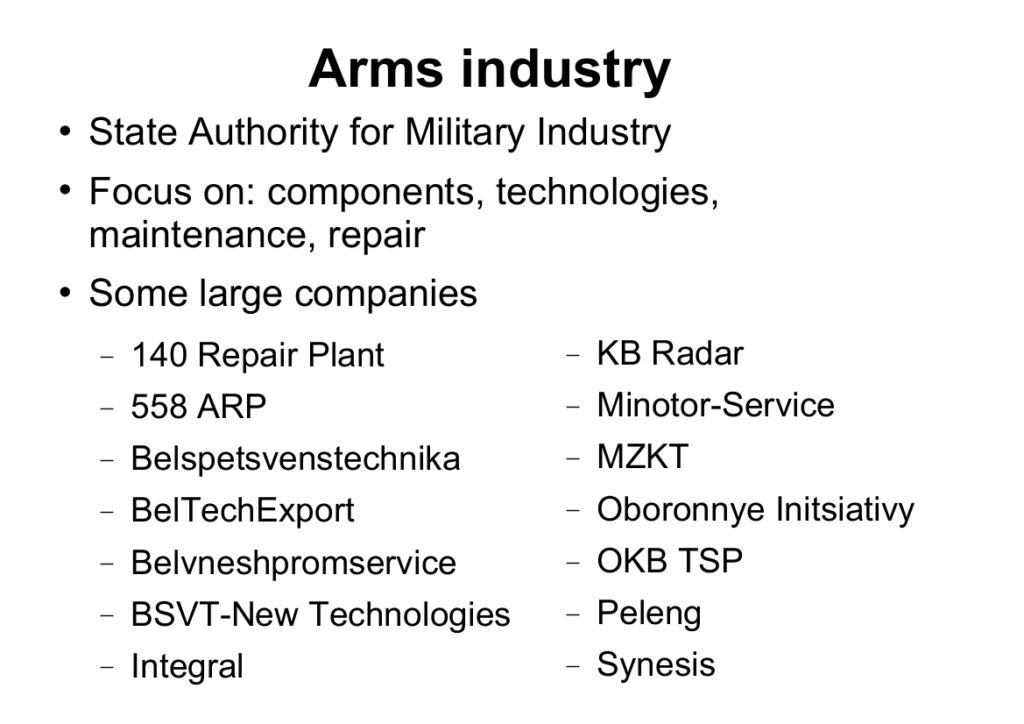
A study for the Polish state-funded thinktank OSW Centre for Eastern Studies from 2021 describes the current Belarusian arms industry as “a relatively well-developed, internally coherent complex focused on the development of information and telecommunications technologies, automated command systems, electro-optical systems, instrumentation, and modernisation packages for the armaments and military equipment of Soviet and Russian construction based on them (aviation, armour, air defence)” and stated that “Belarus is not attempting to develop independent production of weapons and ammunition”. So, an industry that predominantly produces arms components and technology and is also focusing on maintenance, repair and modernisation of old Soviet era and Russian arms.
On the slide you can see a list of some of the largest arms companies from Belarus. They are all under state control and generally are state-owned. According to its own website the State Authority for Military Industry is “the central government agency that […] oversees the creation of modern sophisticated weapons, military and special hardware commissioned by the Belarusian army and exported abroad, [and] also ensures dynamic development of Belarusian defense companies and vigorous military technology cooperation with other countries”.
One of the best known companies is probably MKZT, the Minsk Wheeled Tractor Plant. It was established in 1954 to develop artillery tractors and is still manufacturing off-road vehicles, in particular military trucks. It works with many Russian companies as suppliers of components, while the great bulk of its military exports in turn go to the Russian army. MKZT is also seen as an essential supplier of vehicle parts, such as chassis, to Russia, because domestic-produced alternatives in Russia are of significant lower quality.
A much newer company is Oboronnye Initsiativy, or Defense Initiatives in English, which was only established in 2011. It produces defence suites for aircraft protection, mainly for export. Last year, it signed a Memorandum of Understanding with Indian company Bharat Electronics (BEL) for the supply of such suites for helicopters of the Indian Air Force.
Almost all of the companies in this list, as well as the State Authority for Military Industry, are already subject of international sanctions. This is for example the case for Belvneshpromservice, against which the US installed sanctions regarding arms exports to Syria, Iran and North Korea. And 140 Repair Plant, Beltechexport, MZKT and Synesis are all on the sanctions list the EU published the day after the start of the Russian invasion in Ukraine in February last year.
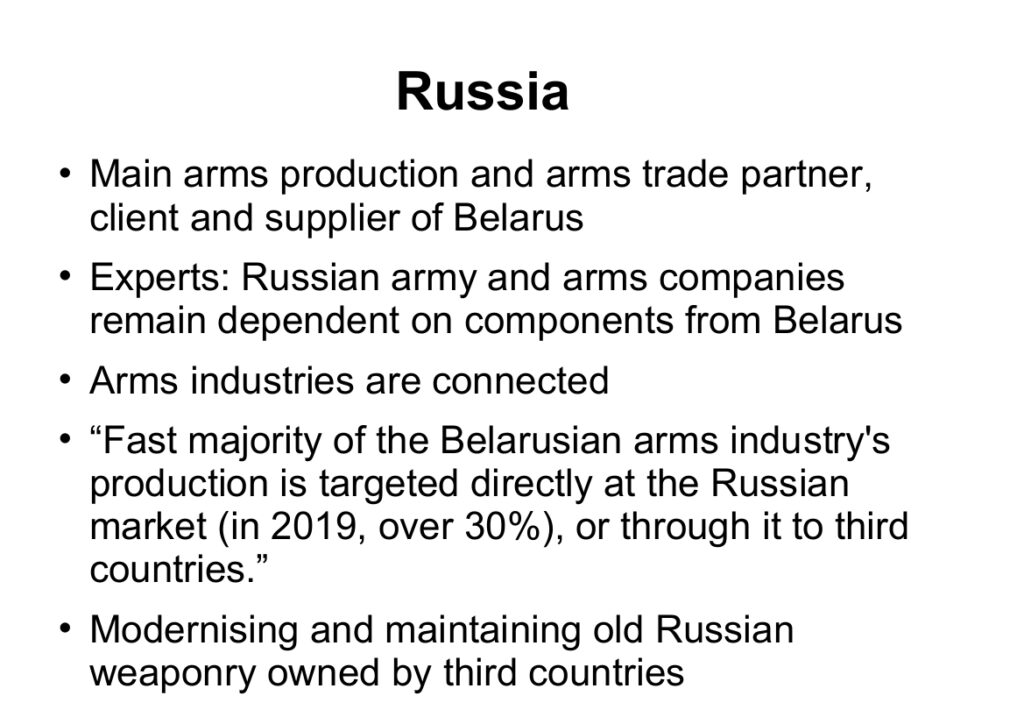
As said, the Belarusian arms industry is still very close to the Russian industry. In all aspects of arms production and sales Russia is the primary partner of Belarus. There are hardly any forms of export control or other limitations on arms transfers between them. About 30% of Belarussian arms exports go to Russia, mainly components. Since February last year cooperation has been intensified. Last February Belarusian President Lukashenko for example announced that the Belarusian arms industry will start large-scale production of SU-25 ground attack aircraft for Russia to support the invasion in Ukraine.
In general, there are many connections and forms of cooperation between companies from both countries. An example is the Russia-based company Defense Systems, which is a joint venture with 38 subsidiaries in Russia and Belarus. Companies from Belarus have also picked up maintenance and modernisation of old Soviet weapons for which Russian companies no longer provide services.
Most experts agree that Russia is somewhat dependent on Belarusian arms companies for certain arms components, though they differ to which extent this is the case and what the consequences would be if the Belarusian supply would be cut off.
In a recent study for the Royal United Services Institute, a military thinktank based in the UK, Emily Ferris stated that “Belarus is one of the few manufacturers of some military-grade components and repair services suitable for Russian army equipment, and Russia has failed to fully replace these industries domestically – hence its decades-long efforts at ‘integrating’ the Belarusian military–industrial complex into its own, which have been resisted so far. Belarus has long been pigeonholed as a defence exporter of unfinished components, which it sells to a limited range of clients abroad, but mostly to Russia. This mutual dependence also has a great impact on Russia, aspects of which would function less efficiently without Belarus’s machine parts”, concluding that “Russia’s reliance on Belarus for military-grade components, as well as logistical services in war and peacetime, could be an area of critical weakness for Russia, particularly in the longer-term event of regime change in Belarus.”
It really is a question what a cut off of the supply of arms components from Belarus to Russia would mean. How soon will the effects be felt? Would Russia be able to switch to domestic production or find alternative suppliers?
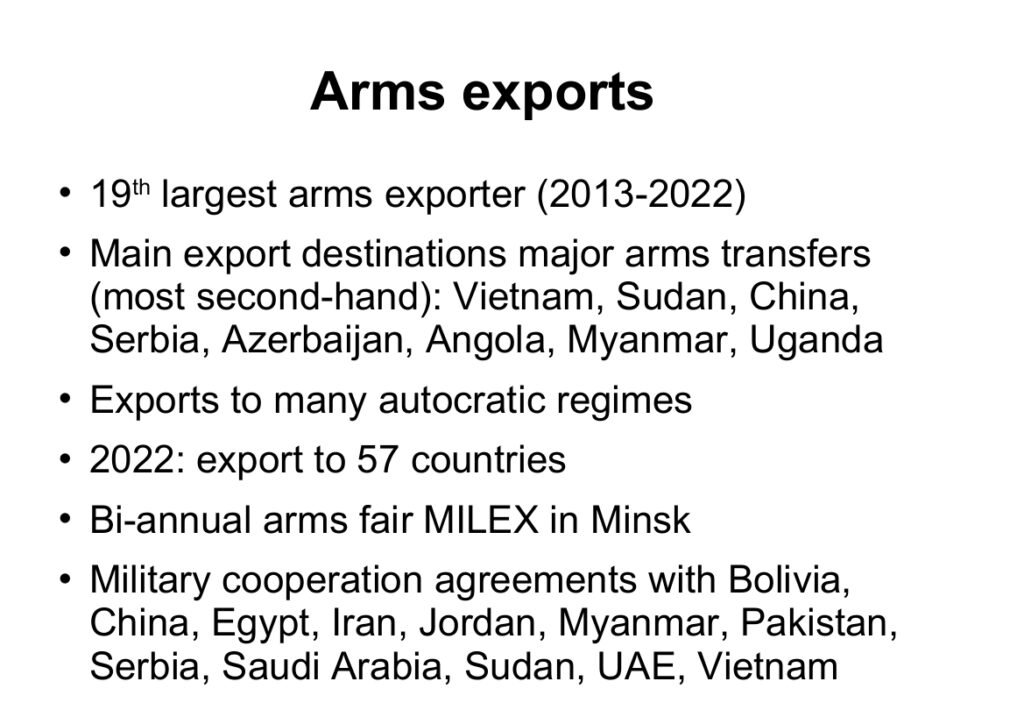
Apart from the role the Belarusian arms industry plays regarding the war in Ukraine, there are also large concerns about Belarusian arms exports to other countries. Much of this export also takes place in connection with Russia, in terms of joint production, supply of components or exports via Russia. However, it also exports independently, by account of the Belarusian government to 57 countries in 2022, despite international sanctions. According to Swedish research institute SIPRI, over the last decade (2013-2022), Belarus was the 19th largest exporter of major arms in the world. As it primarily produces components, most of its major arms exports encompass second hand aircraft, guns and military vehicles. Belarus didn’t sign the UN Arms Trade Treaty.
The list of most important destinations for Belarusian arms exports includes many authoritarian regimes, including some highly controversial clients such as Sudan, Myanmar, China and Azerbaijan. This has been the case for a long time. It is not the most independent source, but back in 2011 the NATO Parliamentary Assembly already voiced concerns about “Belarus’ role as an international weapons exporter […] to numerous autocratic regimes around the world”, including some “which are currenly under a UN arms embargo”.
Belarus has also concluded cooperation agreements regarding arms production, supply of parts, maintenance and repair. Again, in the list of concerned countries with which Belarus has set up cooperation in the last two decades includes many problematic examples, such as China, Egypt, Iran, Myanmar and Sudan. Every two years, including mid-May this year, the State Authority for Military Industry organizes its own international arms fair in Minsk, called MILEX. This edition will almost exclusively be joined by arms companies from Belarus, Russia and China, but earlier editions have seen broader and more diversified participation in both exhibiting companies and visitors, including from EU countries.
I hope this short introduction has given you a snapshot of the Belarusian arms industry, its functioning, exports, ties with Russia and role regarding the war in Ukraine. As said, any additions or corrections are very much welcome.
